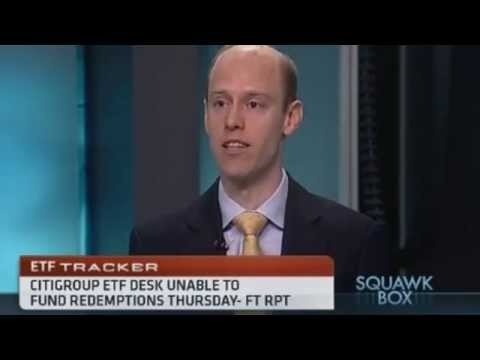Are ETFs Blowing Up Opinion
Post on: 11 Сентябрь, 2015 No Comment

By Paul Amery | 31 July, 2009
In her blogs, Kaminska conflates several perceived problem areas for ETFs: the return drift of leveraged and inverse ETFs, the exoticisation of the industry and the move to track ever more complicated and inaccessible asset classes, the impact on commodity ETFs/ETCs of the CFTC’s likely imposition of trading limits. and the confusion caused by the industry’s lack of consensus on investment product names (ETFs/ETCs/ETNs/ETPs).
The decision by certain US-based brokers and advisers to stop selling leveraged and inverse ETFs to clients, following FINRA’s recent regulatory guidance. to me says more about the brokers than the ETFs themselves. You can imagine a broker’s salesman telling a client, “Think the market’s about to go down? Try this double-leveraged inverse ETF.” While this sounds like a great idea, it can turn out to be very bad advice for a buy-and-hold investor.
Understanding the performance of these funds requires a good level of mathematics, in particular a grasp of compounding and exponential decay (here’s the best explanation I have found to date). FINRA says that “recommendations to customers must be suitable and based on a full understanding of the terms and features of the product recommended; sales materials related to leveraged and inverse ETFs must be fair and accurate; and firms must have adequate supervisory procedures in place to ensure that these obligations are met.” Given these conditions, it’s not such a surprise that many brokers are choosing to throw in the towel and steer clear of these funds completely rather than send their entire sales staff on a first-year undergraduate course.
Is the exoticisation of the industry a problem? It’s inevitable that ETF issuers will try to track new asset classes now that the main ones have been covered. And why not? There’s nothing wrong with trying to develop new funds. Many of them will probably wither away, but as long as investors have counterparty exposures explained clearly to them and costs outlined, I don’t see too much of a problem. There’s nothing forcing investors to buy the latest version of a commodity index ETF or an inverse credit fund if they don’t want to. Kaminska’s mention of Pimco’s entry into the bond ETF market as an example of this trend seems confused.
I mention commodity ETFs/ETCs, tracking problems and the impact of the CFTC’s likely imposition of position limits with some trepidation because this is such a political hot potato at the moment. For me, the biggest problem as an investor when looking at commodity trackers has always been working out how to deal with contango and backwardation. As a non-specialist in this area, I don’t fully understand the differences between the various benchmark oil futures contracts and the basis of their pricing, nor the factors that influence the shape of the energy futures curve. Up to now I have therefore stuck to precious metals ETCs, where the issue of roll costs isn’t relevant.
Chris Cook’s fascinating post on the Oil Drum a week ago brought home to me how recent the development of tradable oil is (three decades ago most supply was locked up in long-term contracts), and how much the trading infrastructure has changed in the last decade with the appearance of the International Commodity Exchange. There is a great deal of interesting information in Chris’s article about the historically close relationship between Goldman Sachs and BP, the basis of the Brent oil price and its difference from the NYMEX WTI benchmark, the influence of financial institutions in the commodity markets, trading limits and banks obtaining “hedge exemptions” (something they are currently fighting hard to keep).
To me, Chris’s allegations of market manipulation require more evidence to support them, but he very helpfully reminds us that huge financial claims on oil are based on quite small volumes of actual crude in tankers. This seems the same kind of leverage that got us into trouble in the banking system. If position limits are applied across the board to reduce this leverage, I can’t really see the problem with that. If they are applied selectively, leaving one set of market participants in a privileged position over others, then I’d be very wary of investing. In any case, a lot of homework is required with this type of tracker.
Finally, the issue of nomenclature is a troubling one, as Jim Wiandt pointed out in a blog on our US sister site a few weeks ago. As I replied at the time, I don’t think there’s an easy way to simplify the set of names we already have. The use of tracker vehicles in very different parts of the financial markets requires a variety of structures.
So, are ETFs blowing up? I don’t think so. But the emergence of this debate shows how far ETFs have ventured and how they have caught the attention of politicians and regulators. It’s certainly a very different world from that of the first equity ETFs, the spiders and the cubes, a short decade ago.














